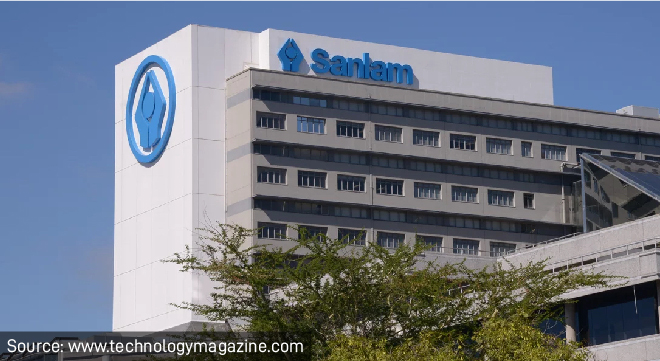Sanlam has reported “a creditable performance” for the first four months of this year, with “strong results” in the life insurance and investment management businesses offsetting weak general insurance and credit business results.
Although its life insurance business recorded much lower Covid-19 excess mortality claims, Santam – the short-term insurer in which it holds a majority stake – was severely impacted by several weather- and fire-related events in the first quarter, as well as the floods in KwaZulu-Natal in April, the group said in a trading update.
Given the continuing uncertainty around the development of the Covid-19 pandemic, as well as economic and financial market pressures, Sanlam has decided to maintain a higher-than-usual level of discretionary capital.
Discretionary capital increased from R2.9 billion on 31 December 2021 to R6.5bn on 30 April 2022.
The Sanlam group’s net earnings from financial services decreased by 7%, largely because of the catastrophe-related claims at Santam. Market volatility impacted credit spread earnings and the returns on Sanlam Emerging Markets’ general insurance float.
Without the one-off items, Sanlam’s net result from financial services would have been 8% higher, it said.
Sanlam’s general insurance net result from financial services slumped 62%, driven by declines in Santam and SEM.
In the case of SEM, this was mainly because of weaker performance by Sanlam Pan Africa General Insurance (SPA GI), which was “significantly impacted” by declines in Moroccan equity markets.
General insurance new business volumes rose 7% (excluding reinstatement premiums at Santam), with SPA GI increasing 10% in constant currency terms.
Sanlam said its general insurance operations were implementing “management actions”, including risk reviews and rate increases, as the global reinsurance market hardens.
Life insurance business doing better
Life insurance net earnings from financial services rose 14%, driven by a strong improvement in the Sanlam Life and Savings (SLS) cluster.
SLS’s net earnings from financial services increased 22% because of lower death claims compared to the first four months of 2021. The cluster also benefited from increased asset-based fee income due to higher average assets under management.
Life insurance new business volumes were up 8%.
In SLS, new business sales in the Retail Mass segment rose 14%, driven by the individual life business recording growth of 27%. Capitec Bank’s funeral business sales increased by 12%, but group business sales were down.
In Retail Affluent, new business volumes declined 4%, largely due to lower risk sales in the agency channels and, in particular, lower sales of guaranteed annuities as the number of people taking early retirement decreased, and competitors raised annuity rates. However, recurring-premium savings products grew 3%.
In the Corporate segment, new business volumes more than doubled on the back of strong growth in single-premium inflows into annuity and guaranteed products. Recurring-premium product sales fell 31%.
The net value of new business (VNB) was down 16%, largely because of product mix changes, with lower sales of risk and guaranteed annuity products.
Although SEM’s life operations saw profitable growth in constant currency terms, increasing by 2% the period, they were 4% lower at actual exchange rates.
The group’s net VNB margin was 2.34%, below the 2.82% in 2021.
Sanlam’s net client cash inflows of R26.7bn were down 5%, in line with expected lower investment flows in SEM and Sanlam Investment Group, off high bases from 2021.
Consumers are under pressure
Sanlam said it expected new business growth to be muted for the rest of the year.
However, the resilience of the South African and broader pan-African economies, particularly those that benefit from higher commodity prices, should provide “some support”.
The group was “most concerned” about the impact of the economy on people’s living standards.
The war in Ukraine will result in higher food and transport inflation, as well as higher short-term interest rates. This is likely to result in lower savings rates and higher policy lapses as personal disposable income comes under pressure.



